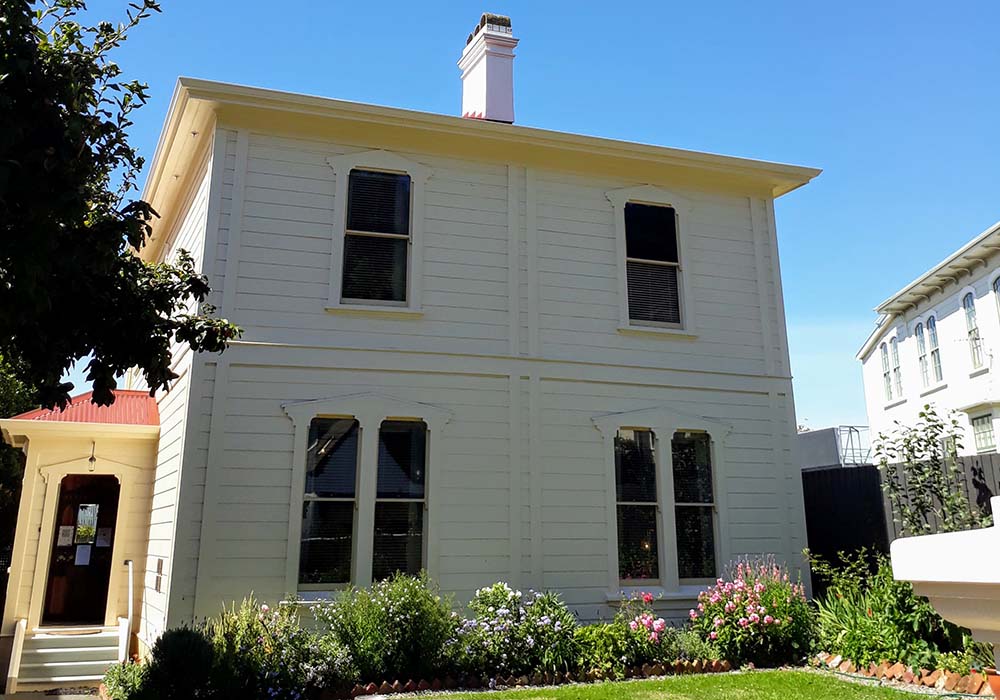The renowned writer’s home reveals something of her life and work, Viv Haldane discovers.
When I opened the door to Katherine Mansfield’s birthplace, I felt as if I’d entered a portal to another century. Classical music playing in the background further evoked this mood. I blinked and took in these historical surroundings from the vantage point of the entrance hall. So, this was where the young Kathleen Mansfield Beauchamp, as she was christened, started her life in 1888. From my visit, I hoped to gain insight into her creative mind, and learn more about her life.
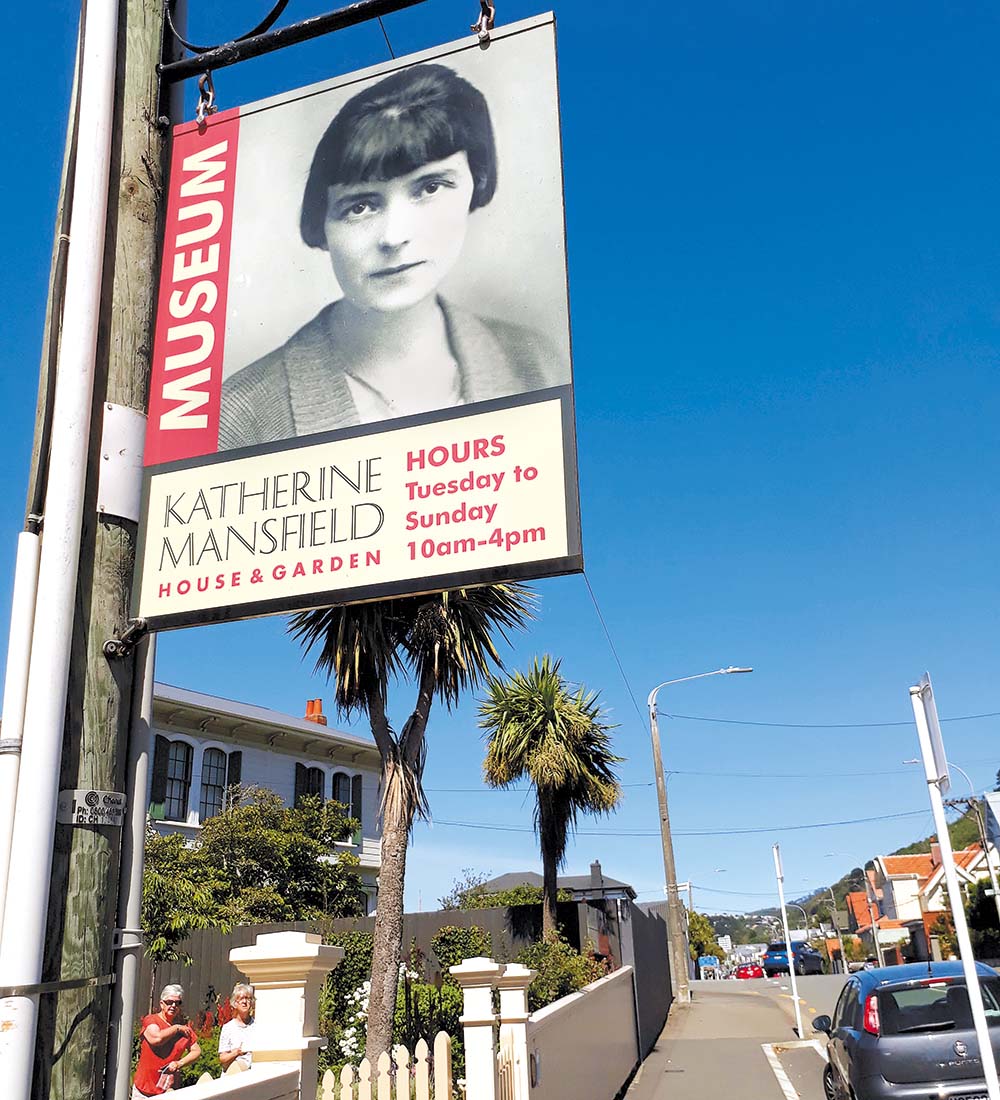
A wealthy family
Her father, Harold Beauchamp, was an ambitious man. As one of the first directors of the Bank of New Zealand and a member of the Wellington Harbour Board, he wanted a house that reflected his aspirations. The Italianate residence, in Tinakori Road, was decorated in the Art Nouveau and Aesthetic Movement style, in vogue in the late Victorian era: bold colour (an influence from Africa, India and Asia) and ornately patterned wallpaper.
Between 1888 and 1893, the extended Beauchamp family lived there – Harold and his wife Annie, Katherine and her older sisters Vera and Charlotte, her baby sisters Gwendoline and Jeanne, her maternal grandmother Margaret, aunts Kitty and Belle, and a maid. When Katherine was five, they moved to a much bigger house in Karori. This decision was partly dictated by the need to get away from disease caused by the lack of sanitation. Katherine’s brother, Leslie, was born after they moved to Karori.
A peek back in time
The scullery has bare timber floorboards and simple match lining, a colonial-style clothes airer, a scrubbing board, kitchen utensils and Mrs Maclurcan’s cookbook, popular in that era.
In Katherine’s story ‘A Birthday’, we read of the backbreaking task of housework when the visiting doctor scolds the man of the house for suggesting his wife has no nerve. “Nerve. Man alive! She’s got twice the nerve of you and me rolled into one. Nerve. She’s nothing but nerve. A woman who works as she does about the house and has three children in four years, thrown in with the dusting, so to speak.” Spot on, Katherine. Being wealthy enough to afford a servant significantly reduced the burden of domestic labour on the women of the family.
Next to the scullery is a simply decorated kitchen, with a coal range. Rows of preserved fruit in jars line some shelves. I can imagine the children of the household darting mischievously in and out, asking for scraps of dough or morsels of freshly baked biscuits and cake.
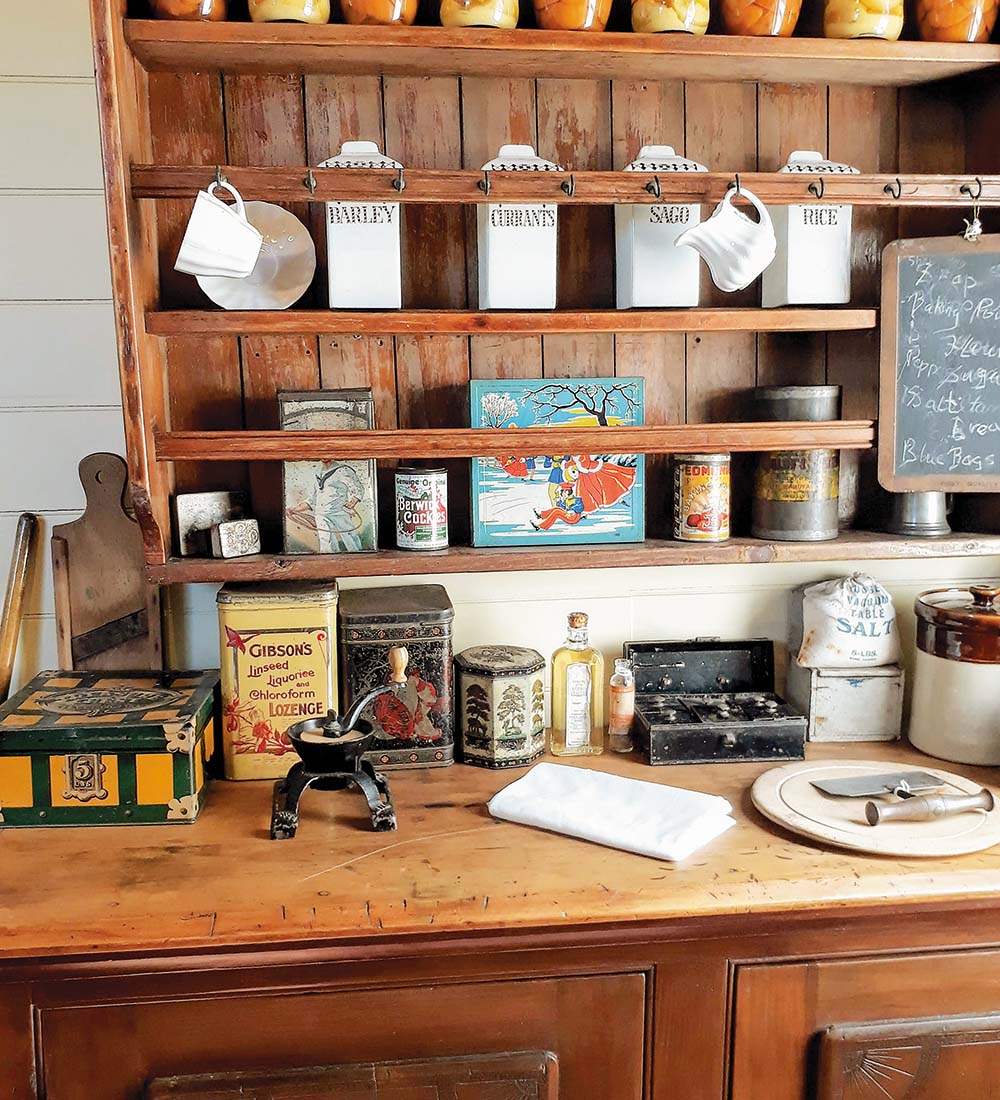
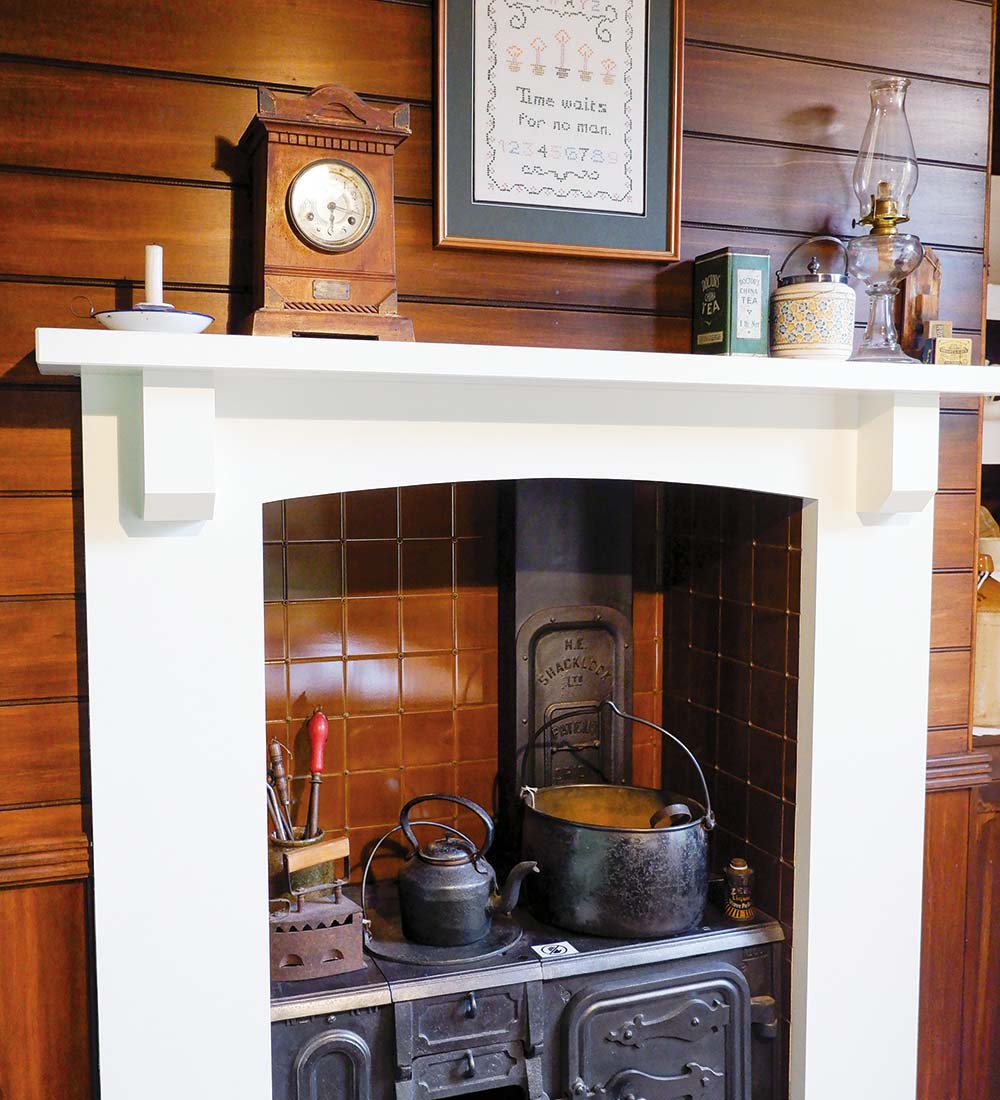
Dining and entertaining
In contrast, the formal dining room and drawing room are luxuriously decorated, with the best china and exotic knick-knacks on display.
These were rooms for entertaining and impressing visitors, and for practising music. The Beauchamp sisters all had music lessons, and Annie was keen to show off her daughters’ talents when visitors came calling, often on a Friday – known as Mrs Beauchamp’s ‘at home’ day.
Here again, family life provided material for the acutely observant Katherine. Her character Mrs Sheridan, in ‘The Garden Party’, says, “What nonsense calling is. What a waste of time. I’ve never met a single woman yet who even pretended to like it. Why keep it up then?”
In colonial New Zealand, the husband was the master of the house, and the dining room was his domain. ‘Prelude’ describes Stanley Burnell at the dinner table. “He ran his eye along the edge of the carving knife. He prided himself very much on his carving, on making a first-class job of it. He hated seeing a woman carve, they were always too slow, and they never seemed to care what the meat looked like afterwards. Now, he did. He took real pride in cutting delicate shaves of cold meat; little wads of mutton just the right thickness and dividing a chicken or a duck with nice precision.”
Katherine’s enjoyment of food, particularly puddings, is apparent in ‘A Young Girl’. “He took a chocolate crème, a chocolate éclair, a meringue stuffed with chestnut, and a tiny horn filled with fresh strawberries … ‘I say – what about ice, Hennie? What about tangerine and ginger? No, something cooler. No, what about fresh pineapple cream?’”
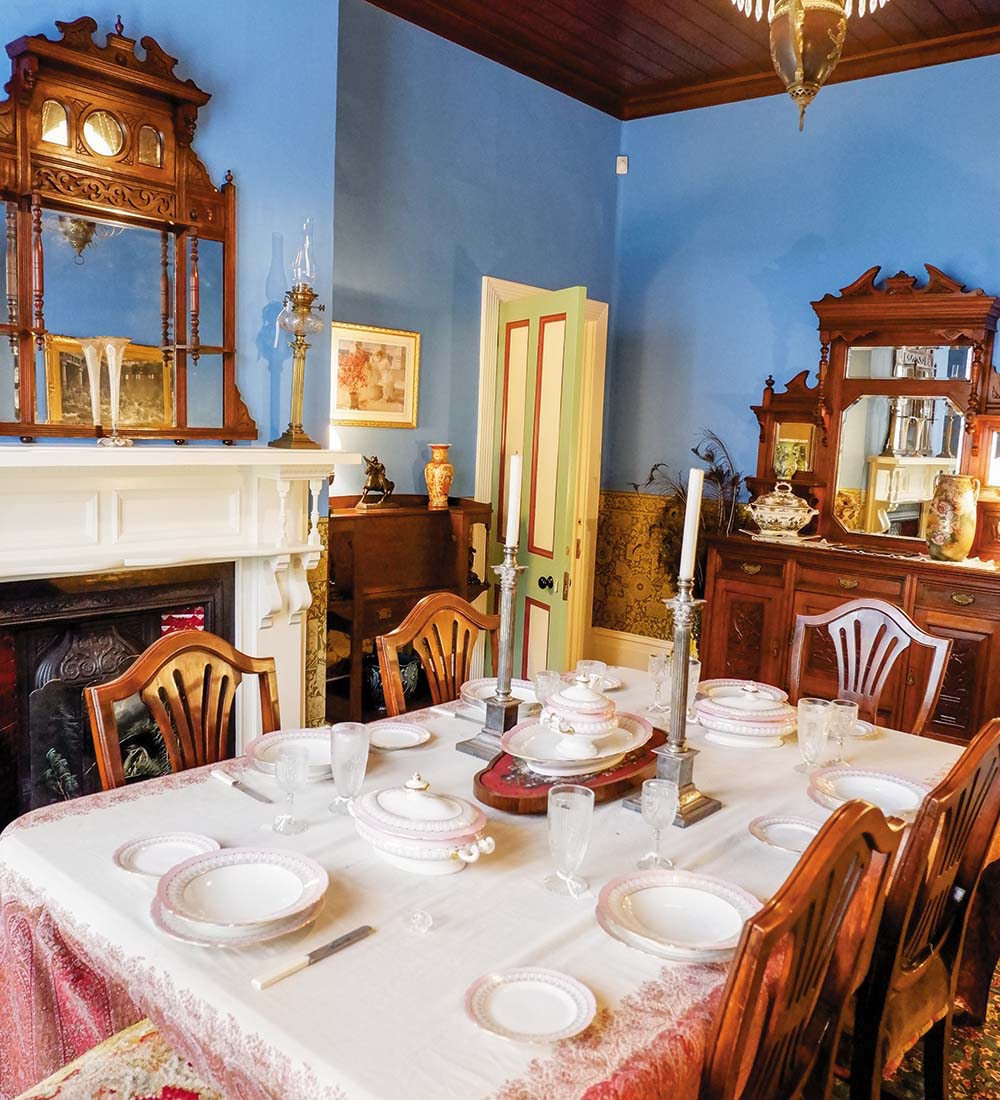
Stairs and stories
As I climbed the stairway with its hand-carved balustrade, I read that Katherine was fascinated by areas of transition such as stairs, windows and train stations. In a letter written in 1921 to her friend Dorothy Brett, she said, “Don’t you think the stairs are a good place for reading letters? I do. One is somehow suspended. One is on neutral ground – not in one’s own world nor in a strange one. They are an almost perfect meeting place. Oh heavens! How stairs do fascinate me when I think of it. Waiting for people – sitting on strange stairs – hearing steps far above, watching the light playing by itself – hearing far below a door looking down into a kind of dim brightness, watching someone come up. But I could go on forever. Must put them in a story, though! People come out of themselves on stairs – they issue forth, unprotected.”
A precocious talent
The upstairs master bedroom pays a grand tribute. Painted red (apparently a favourite colour of hers), it has an easy-to-follow timeline of her life and achievements.
I learned that she began writing from a very young age – winning first prize, aged 9, for her story ‘Enna Blake’; at 12 she started a school magazine, while at Wellington Girls’ College. One of her teachers described her as “a surly sort of girl” who was “imaginative to the point of untruth”.
In 1903 the Beauchamps sailed to England, and Katherine, Vera and Charlotte attended Queen’s College in London. Many new influences and experiences entered her world during this period: writers, musicians and friends alike. In 1906 the family returned to New Zealand, which seemed dull in comparison, and the young Katherine railed against it furiously.
Bowing to her parents’ wishes, she enrolled at Wellington Technical Institute to study typing and bookkeeping. However, this wasn’t the future the headstrong and passionate young woman had in mind. Her first choice of career was to be a professional cellist. From a young age she’d had lessons and showed considerable talent, but her parents opposed it.
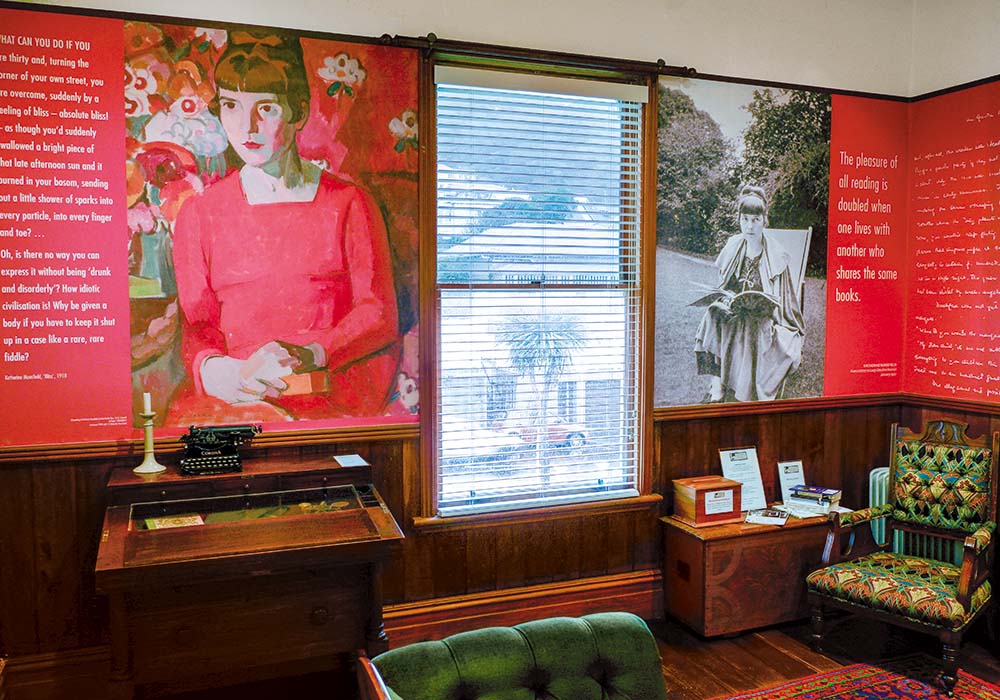
Escape to England
At 18, Katherine declared in a letter to her cousin Sylvia Payne, “In future I shall give all my time to writing”. After badgering her father to let her return to England, at age 19, in 1908, she sailed for London, never to return.
Once there, her life took on many new dimensions: exciting friends and literary mentors, lovers, a miscarriage, marriage, travels in Europe and sadly, a downward spiral into ill-health. The loss of her brother, Leslie, in 1915 during World War 1, seemed to trigger nostalgia for scenes from their childhood, and inspired her to write even more. Katherine died in 1923, aged 34, from tuberculosis while living in France.
A lasting legacy
Fortunately her husband, John Middleton Murry, with whom she had an on-off relationship, preserved her stories (editing and publishing them) for future generations of readers to enjoy.
The impression I gained from my visit was that she was a free spirit: highly imaginative, emotional, impressionable, creative, stubborn, observant and volatile. All these qualities are fertile soil in which creativity can flourish, and in this artist, it certainly did.
If Katherine had been living today, I wonder whether she would have been seen as unconventional or eccentric? I think she would have fully embraced the extensive opportunities available to her. Writing, at least, liberated her from the narrow range of life choices she faced, as a woman in the early 1900s.
In a 1906 letter to Sylvia Payne, she wrote, “Would you not like to try all sorts of lives? – one is so very small – but that is the satisfaction of writing – one can impersonate so many people.”
Restoration
25 Tinakori Road was purchased in 1987 by the Katherine Mansfield Birthplace Society, and the arduous task of restoration began. Further work was completed in 2019.
The house was initially intended to be a writers’ residence, but the refurbishment took a different turn when some of the original decor was discovered intact. As a result, the society decided to create a museum to show how the Beauchamps lived during their time there.
The upgrade revealed scraps of the original wallpaper behind the skirting boards, and uncovered the original hand-carved bamboo balusters on the stairs.
Because the original plans weren’t available, the society was guided by descriptions of the house from Katherine’s writings, and photographs and archaeological analyses, to recreate the home and garden.
The garden is planted with flowers often mentioned in her stories – chrysanthemums, geraniums, hydrangeas, heritage roses, wisteria; and trees and shrubs such as lemon, hebes and magnolias.
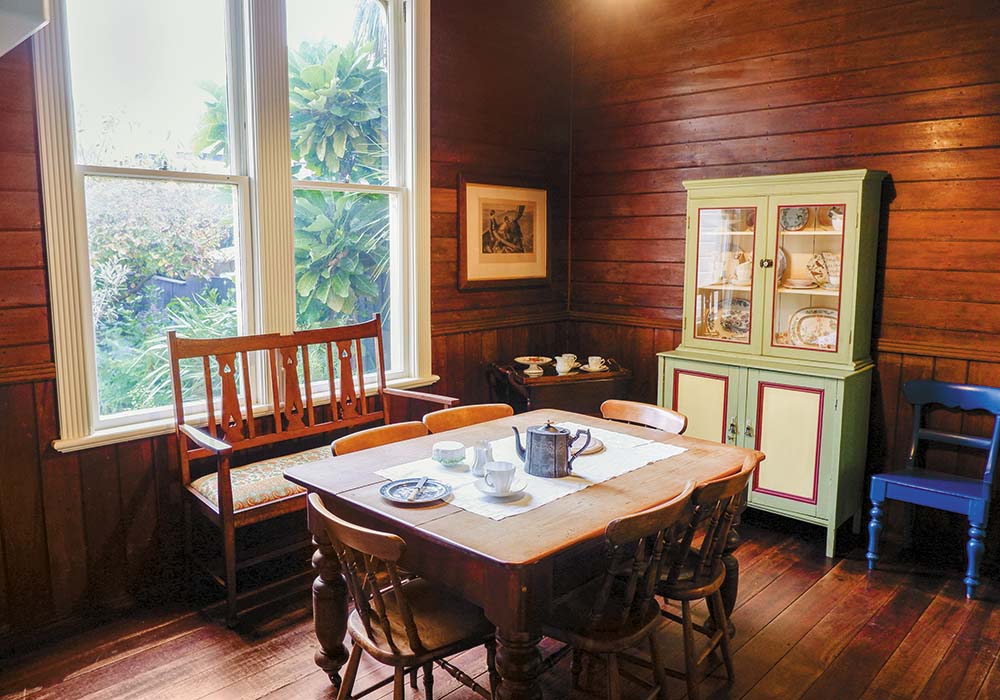
More Information
Katherine Mansfield House & Garden: 25 Tinakori Road, Thorndon, Wellington. Opening hours: Tuesday to Sunday 10am to 4pm. For more information, visit katherinemansfield.com
Note: parking is a challenge in this street, so be prepared to walk a distance or catch a bus.

